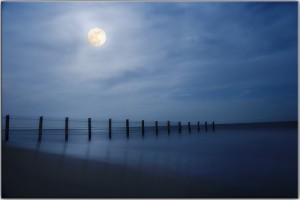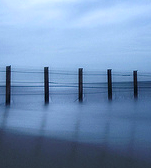 I was enjoying a cup of tea with a friend and colleague over our spring break. We were discussing a student who had chosen to hand in a short story rather than the assigned analytical essay. The student told my friend (who teaches a course called Writing Seminar) she hadn’t felt like writing an essay, she wanted to do something creative. The student was miffed to get her paper back with comments indicating a strong piece of fiction while receiving a middling grade for the assignment. Was this student being creative or doing something easy?
I was enjoying a cup of tea with a friend and colleague over our spring break. We were discussing a student who had chosen to hand in a short story rather than the assigned analytical essay. The student told my friend (who teaches a course called Writing Seminar) she hadn’t felt like writing an essay, she wanted to do something creative. The student was miffed to get her paper back with comments indicating a strong piece of fiction while receiving a middling grade for the assignment. Was this student being creative or doing something easy?
A few weeks before the break, I spent time in our art gallery enjoying the display of student work. The works were grouped by course, with common themes apparent in the dizzying display of individual experimentation and interpretation. When I went into our Learning Management System to read and better understand the requirements for the work I saw on the wall, I was struck by the limits within each assignment.
In one unit, students were “to interpret an image of choice using positive/negative, first in black and white, then in high contrast complimentary color. Free choice of media. Assessment based on demonstrating the true dominance of one color over the other.” Each student worked within the pre-determined limits and discovered immense space for exploration and expression. Were these students being creative or simply following directions?
Creative limits
Is creativity license to do as one pleases? Teachers work within limits as well as students. We have a calendar, a schedule, a time period. We have school mission statements and departmental outcome expectations. We have school imperatives: everyone will use the LMS system, everyone’s grades have to be in our database system by a certain date. Ingenuity and inventiveness find expression within limits.
Our seventh graders have been spending the year learning about the confluence of creativity in problem solving and the checks the physical world places on what is possible. For instance, they created wonderful Rube Goldberg machines to pop balloons. They had a piece of plywood, scrap wood from the wood shop, hammers, nails, matchbox cars, glue and thumbtacks. They also had a deadline. Each team created a unique machine; each operated on different principles of how levers work and popped balloons in varied ways.
I wrote here sometime ago about teachers teaching creativity through modeling creativity in their own choices, work, and shaping of their courses.
 More recently, I have been thinking about pursuing creativity from within limits. I want my students to create new meaning for themselves, to take risks in their thinking and in their utilization of sources and evidence to develop and defend their ideas. And yet, I want them to learn to research effectively, write thoughtful blogs, engage in successful discussions (online and in-person), and yes, write effective, analytical essays well supported by evidence.
More recently, I have been thinking about pursuing creativity from within limits. I want my students to create new meaning for themselves, to take risks in their thinking and in their utilization of sources and evidence to develop and defend their ideas. And yet, I want them to learn to research effectively, write thoughtful blogs, engage in successful discussions (online and in-person), and yes, write effective, analytical essays well supported by evidence.
Within this paradigm the challenge becomes the space we allow for students to pursue interest within an assignment – to shape passion within constraints. I have had times with my own students when one will come to me and say, “I have no ideas. This time period or topic is so boring!” After some discussion, we often find a way into the project that stretches the boundaries of the assignment almost to the breaking point (usually in topic choice), while still living within the limits I have imposed.
License, not permission
I almost wrote that students need permission to approach an assignment in this manner, but permission isn’t the right reference. Students should come to see each demonstration of learning as an opportunity to create something new for themselves and their audience. Rewarding students for taking risks and rethinking approaches to constraints within a project takes practice and courage. It takes some license too.
Paradoxically, students need the freedom to explore the possibilities within a set of constraints. Otherwise, they are only learning to mimic existing forms and media rather than exploring them for their creative potential. Our challenge as teachers is to develop in our students the license to explore within the limits as an almost automatic response to any problem or task.
Photo Credit: Extra Medium via Compfight cc
Margaret Haviland
Latest posts by Margaret Haviland (see all)
- Student Creativity: the Importance of License and Limits - April 24, 2013
- Our US History Student Film Festival - January 31, 2013
- How I Spent My Summer Vacation — Teaching US History in Six Weeks to 10 Students Around the World - October 2, 2012


The idea of creativity within limits is an interesting one to me. Especially given my interest in Problem Based Learning. While reading this I was struck with this thought: Even an artist, starting with a blank canvas, has limits. For instance, she limits her work to the size of the canvas she has, she limits it to the colors in her palette. The creativity comes from how she uses the limits along with her creativity to create new work.
What we are starting to see now however, is that with technology, students and teachers are being given a much larger canvas to work with. No longer limited to the four walls of the classroom, and no longer limited to the palette of their classmates as resources to collaborate with.
And while I totally agree that risks (within limits of course) should not be discouraged with students, the same should also be said for teachers that want to move beyond the traditional limits of the four walled teacher palette that they have ben given to work with.
Nicely done article. Thanks for making me think.
Dear Tim,
Thank you for reminding me to think about teachers too. I wonder what the limits/constraints are for teachers? If the internet helps us expand beyond the classroom, what should the creative inducing constraints be? For instance, is it enough to connect students in one school with another? Is it enough to suddenly have the resources of major research archives at our student’s disposal? To use your metaphor, does adding more colors to the palette insure creativity? I think it makes it possible, but something more is needed. In each case the something more will be different.
Perhaps a good guiding question would be “Does this new connection beyond the bricks and mortar classroom add to our understanding/deepen our understanding.? While I see value in connecting students to other students and resources, given all the constraints on teachers time (the currency of schools) there has to be a real value added extension/deepening of understanding.
Well, knock me over with a feather.
Really, this is new.
Come to the world of the entertainment arts (TV, film, theatre, etc.) and exercise your creativity.
You will right from the start multiple constraints:
1) the script
2) the director’s vision
3) the resources available
4) what the budget will cover (a.k.a. the producers will pay for)
5) “tradition” — established procedures, methods, expectations.
and the most constraining of all:
6) what the audience will buy.
Yet, given all that, the entertainment arts thrive and constantly awe us with new wonders.
Good theater teachers, dance teachers, art teachers, film teachers do this ALL the time. They PUSH the students to be creative but with limits always present. Maybe the arts should be more important in the curriculum, more respected and more imitated in their methods.
Dear Doug,
Thank you for your comment. I couldn’t agree with you more. Its no wonder the “A” has been added to STEM to make it STEAM. And yet for many of us not grounded in the arts, there is a miss-perception of the creative process and the interplay between creativity and the many different constraints you have so helpfully outlined I would go one step further and suggest that for many this insistence on content mastery first, creativity in college arises from our own misunderstanding of the interplay between knowledge, limits, and exploration in creating something new. Furthermore, as teachers some of us may wonder about our own ability to set the sorts of limits that engender creativity that doesn’t devolve into facile exercises. While I would agree that the arts need to be central to our student’s learning, our colleagues in the sciences, humanities, and social sciences need to learn from their art colleagues!
One thing that struck me continually in my work as a drama teacher of elementary and high school students was that having parameters or limits almost forced the creativity or at the very least, prompted it. If kids had the freedom to improvise what they wanted, they would flounder.
Dear Susan
Thank you for your comment. I have seen this in a recent turn over in art teachers. A previous art teacher set very few parameters for her students and the work by and large lacked the depth and exploration I see with our current teachers. I am not an art teacher, but it is as if parameters and limits push students to greater depth in exploration. I would say this is my experience as a history teacher. I try and give my students license in choosing topics, sources, demonstrations of learning while setting limits in expectations of creating new knowledge, contributing to existing knowledge, demonstrating wisdom in understanding–though sometimes I do want an analytical essay (though it doesn’t have to be five paragraphs and written strictly in third person)!